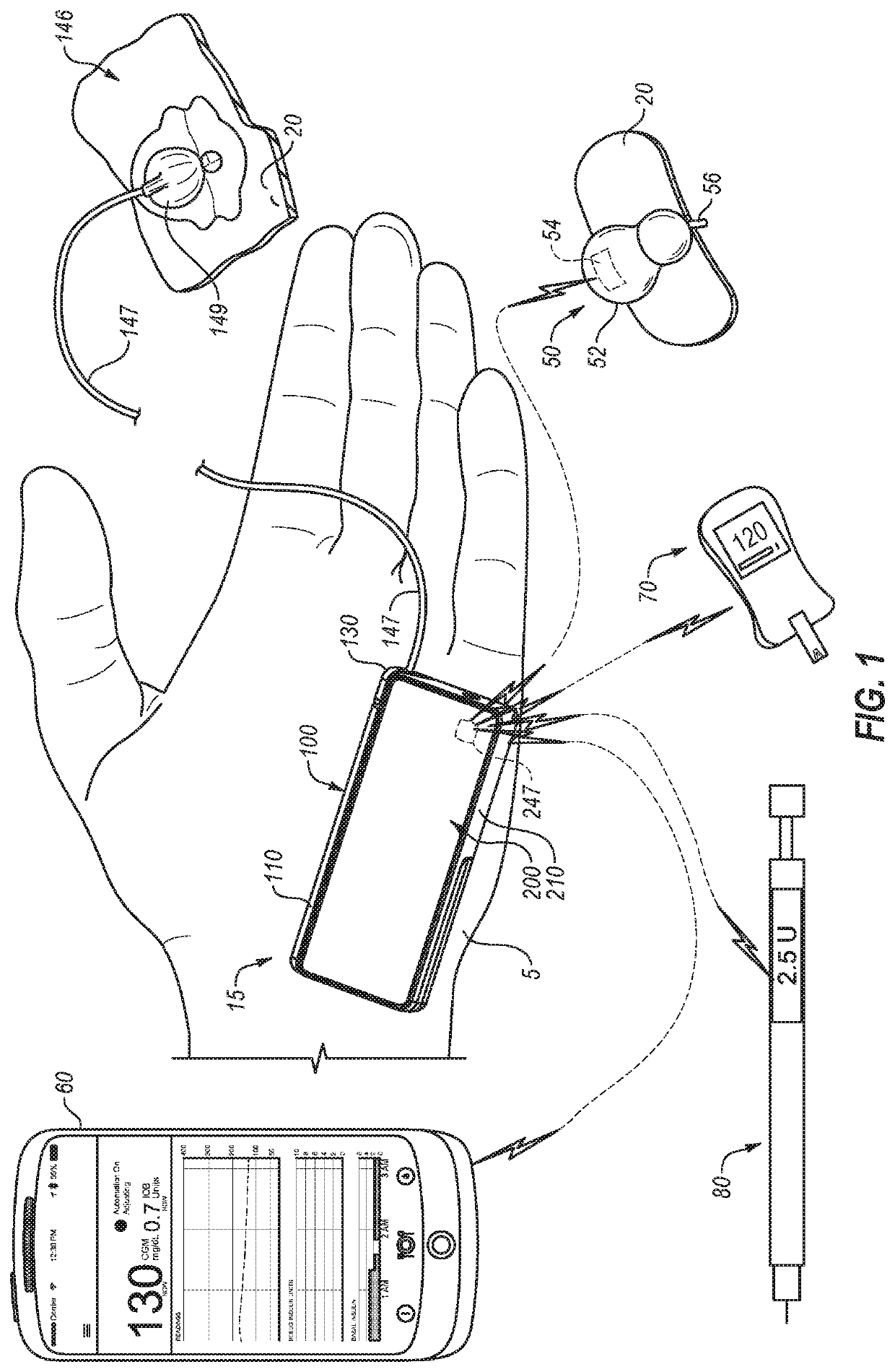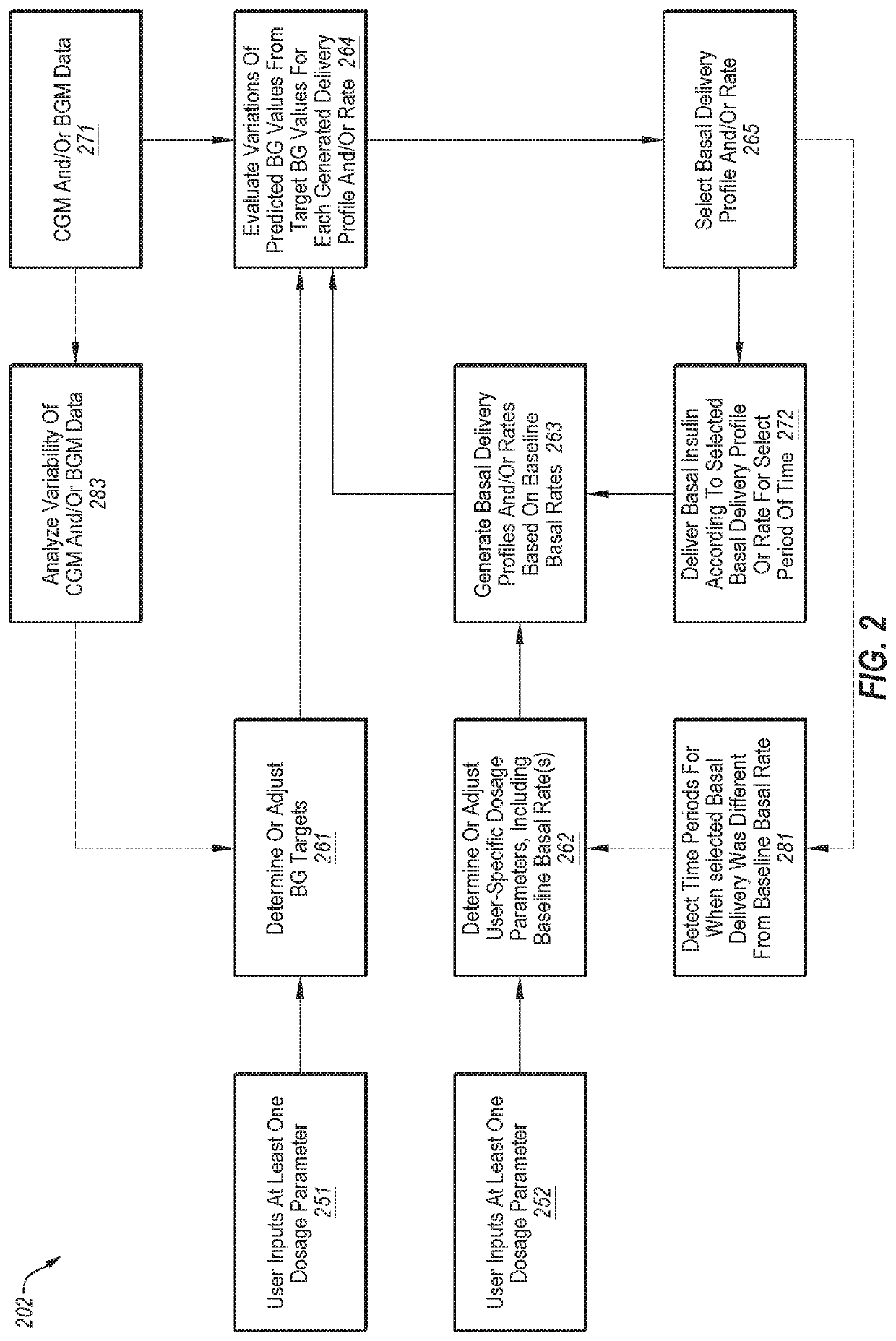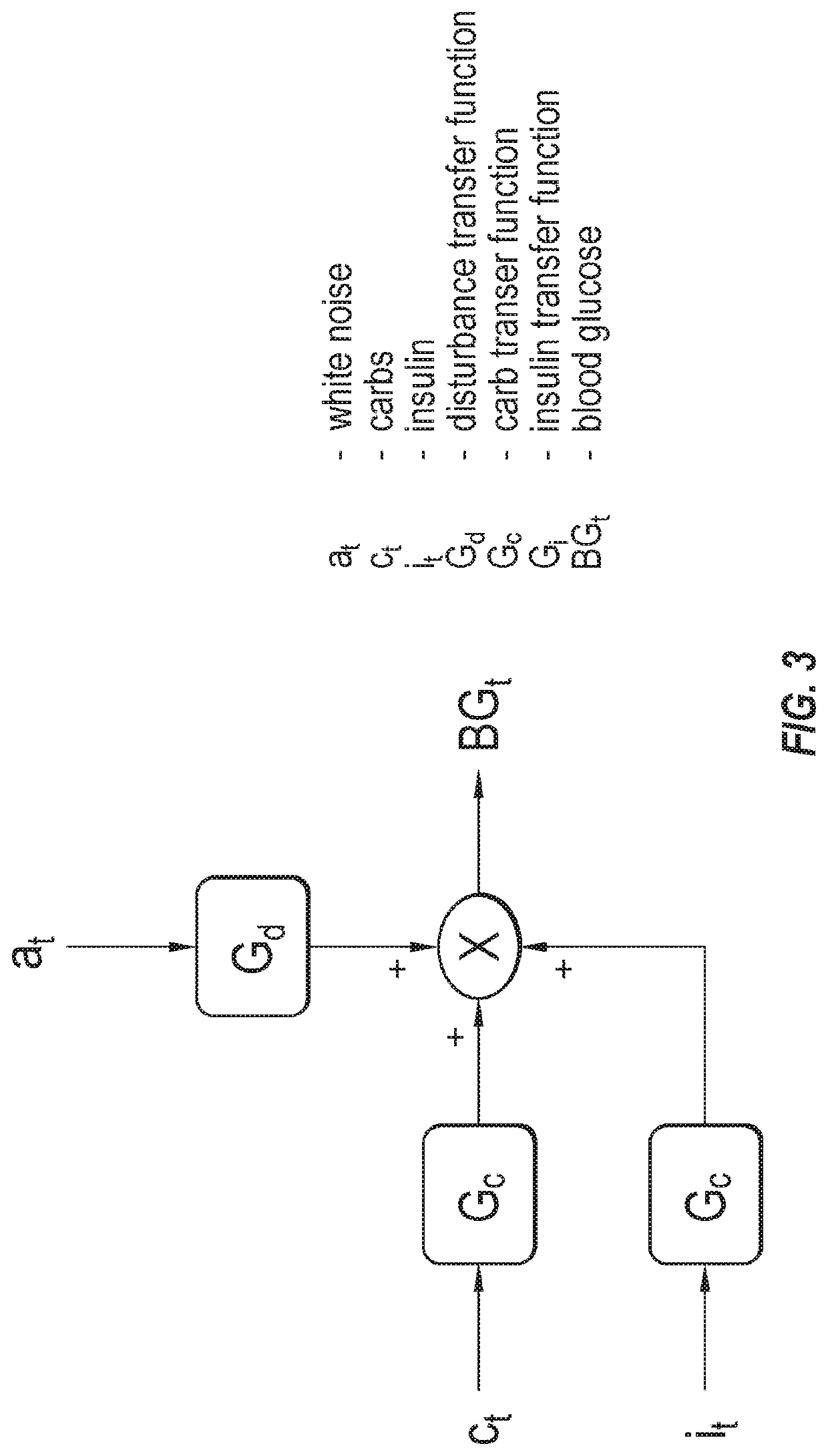Adjusting insulin delivery rates
a technology of insulin delivery and rate, which is applied in the field of adjusting insulin delivery rate, can solve the problems of inability to provide for proper absorption of body fat, risk of amputation of extremities, and excessive glucose in blood plasma, so as to reduce the cognitive burden of managing diabetes and simplify the delivery of basal insulin
- Summary
- Abstract
- Description
- Claims
- Application Information
AI Technical Summary
Benefits of technology
Problems solved by technology
Method used
Image
Examples
Embodiment Construction
[0092]Medicine delivery systems and methods provided herein may be used and performed, respectively, by a user, for example, a person with diabetes (PWD). The PWD may live with type 1, type 2, or gestational diabetes. In some cases, a user can be a healthcare professional or caregiver for a PWD.
[0093]Methods and systems provided herein can use information from a glucose measurement device (e.g., a continuous glucose monitor) to have up-to-date blood glucose data (e.g., a plurality of blood glucose data points each hour) for the PWD in order to determine how to adjust basal insulin delivery rates. In some cases, methods and systems provided herein can use blood glucose data from both one or more continuous glucose monitors and one or more blood glucose meters. Methods and systems provided herein can be part of a hybrid closed-loop system (for example, where basal rates can be adjusted automatically and the PWD can manually enter or deliver a bolus). In some cases, methods and systems...
PUM
 Login to View More
Login to View More Abstract
Description
Claims
Application Information
 Login to View More
Login to View More - R&D
- Intellectual Property
- Life Sciences
- Materials
- Tech Scout
- Unparalleled Data Quality
- Higher Quality Content
- 60% Fewer Hallucinations
Browse by: Latest US Patents, China's latest patents, Technical Efficacy Thesaurus, Application Domain, Technology Topic, Popular Technical Reports.
© 2025 PatSnap. All rights reserved.Legal|Privacy policy|Modern Slavery Act Transparency Statement|Sitemap|About US| Contact US: help@patsnap.com



